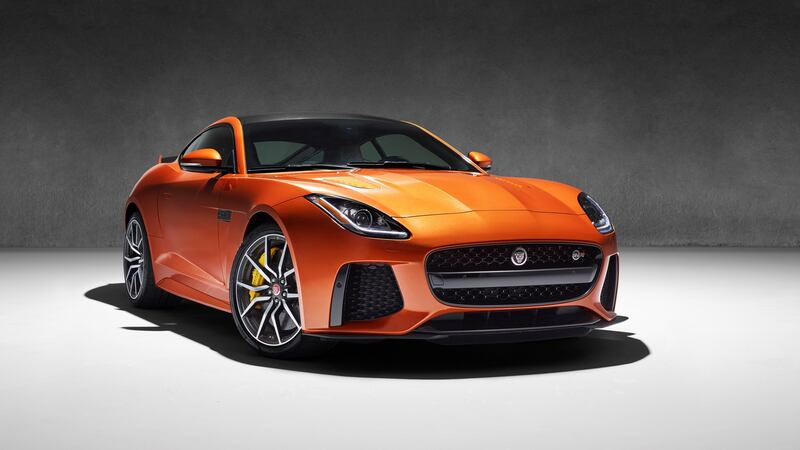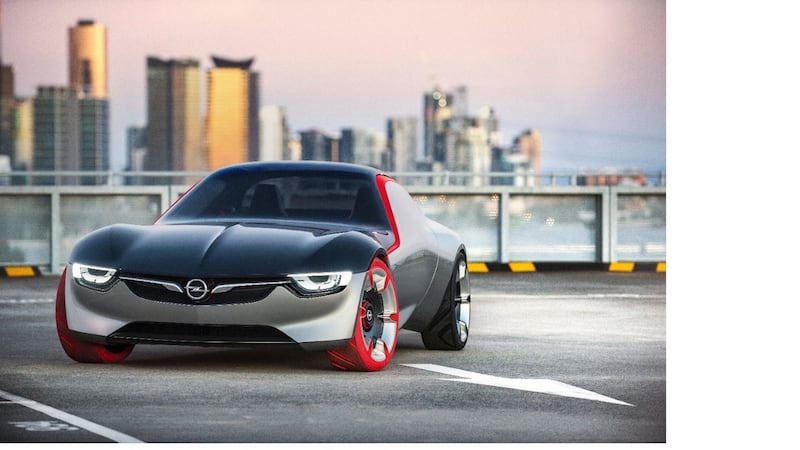The announcement of a new Jaguar or Porsche would be decently sized news all on its own, as would official details and images of a new Opel sports coupe. To get all three breaking on the same day? Better start getting the red pens out for the day that's in it.
Three new sports cars (two ready for sale now, one a concept for potential production) appearing on the same day sort of goes against conventional wisdom. After all, surely all we care about now are SUVs and crossovers, right?
Well, perhaps not. In 2015, fed by good economic news (where did that all go?) sports car sales in Europe actually increased quite a bit. Audi, which has long been the market leader with the TT coupe and convertible, saw a dramatic jump in its sales, from 9,768 units in 2014 to a whopping 17,915 in the first three quarters of 2015.


Ah, but there's an anomaly there. The TT was replaced in the course of 2015 with a new model, which gave a natural boost to sales, even if a doubling of numbers was still an impressive result. Every other major sports car model, from the Mercedes SLK (now SLC) to the Mazda MX-5 to the Porsche Boxster all saw their sales fall.
New Porsche
Porsche has responded to that fall off in Boxster sales by whipping out the expensive, thirsty flat-six 2.9 and 3.4-litre engines of the Boxster and Boxster S and replaced them with a new four-cylinder turbo flat-four, in either 2.0-litre or 2.5-litre capacities. Power is actually increased, by 35hp for both models, to 300hp and 350hp, and torque climbs to 380Nm or 420Nm, yet Porsche claims that the new engine is actually 13 per cent more efficient than the old six-cylinder units. Co2 figures haven’t yet been released, but 40mpg combined fuel consumption is being claimed for the 2.0-litre Boxster, which sounds pretty impressive.
Porsche has also tweaked the styling (new headlights, new doors and air intakes) and the interior (which gets a new infotainment setup) as well as altering the suspension (which can now be optionally lowered by 10mm for the Boxster or 20mm for the Boxster S) and has included the Sport Response button from the 911, which gives you a quick blast of turbo overboost power for snappy overtaking.
Oh, and it’s changed the name too - from Boxster to 718 Boxster, a nod to the past (the classic 1957 718 Spyder racing car, which also had a four-cylinder engine) and to bring the model into line with the 911 Carrera. It’s on sale now and prices start from €67,963.00 and €86,057.00 for the 718 Boxster and 718 Boxster S respectively.
Not going on sale, at least not yet, is the Opel GT Concept, a compact, two-seat hardtop coupe that will go on display at the upcoming Geneva motor show. It’s a surprising move from Opel (albeit one heavily trailed in the past couple of weeks) which is currently working on replacing many of its current models with SUV-style vehicles, and is also planning a large, seven-seat range-topping 4x4. The GT Concept is a pretty little thing, whose red front wheels are in homage to a 1920s Opel Motoclub 500 motorcycle, and which are also supposed (apparently) to look a bit like roller skate wheels.
Opel GT
The GT name is also a bit of a throwback too, to the classic GT coupe of the 1970s and the Experimental GT Concept car of 1965. “Apart from that” says Opel, “the GT Concept does not have many links to the past. The long bonnet, the absence of a trunk lid, the central dual exhaust and of course, the name all refer to the original GT. Apart from that the Opel GT Concept is independent with no sign of retro-design.”
This new concept has some clever touches - mostly to do with the doors. There is door glass that seems to seamlessly blend with the steel roof, a touchpad hidden in the red accent line in the roof that opens the doors, blind-spot eliminating rear cameras that also do away with door mirrors. The doors are also designed to slice deeply into the front wings when opened, making them more compact for getting in and out in tight car parks. In fact, Opel is touting the GT as quite the urban sports car, designed to be agile and fun when stooging around town at low speeds.
It uses a mid-front engine, with the compact 1.0-litre three-cylinder turbo engine from the new Astra, here in 145hp trim. It's rear-wheel-drive, via a six-speed paddle shift transmission, and Opel claims a top speed of 215kmh, with 0-100kmh dash of "less than eight seconds." Overall weight is said to be less than 1,000kg.
Production ready?
Will Opel actually make it though? With no off-the-peg rear-drive chassis available in the Opel range, it will be expensive, and with Mazda shifting just 8,000 of the rival (and conceptually similar) MX-5 last year, Opel's bean counters will be hard to convince. Certainly, Opel's senior brass is talking more about the style and design of the car than any solid plans for production. "We created the GT Concept to capture the bold, emotional spirit of the Opel brand. It is dramatic, sculptural and full of innovations, which is our great tradition that we intend to continue. Back in 1965, Opel developed the Experimental GT, a thoroughly modern vehicle that also boasted a pure sculptural shape. It's certainly difficult to reinvent an icon but just as the Experimental GT was avant-garde back then, so too is this GT Concept today - absolutely pure, minimalistic, yet bold and uncompromising. This coupé impressively demonstrates the continuous development of our Design philosophy - 'Sculptural Artistry meets German precision'," said Mark Adams, Vice President, Design Europe.
Jag’s new SVR
Definitely available to buy, once it has made its debut at the Geneva motor show as well, is the new Jaguar F-Type SVR. The 575hp coupe is the second vehicle from Jaguar-Land Rover's Special Vehicle Operations division, the high performance skunkworks which also gave us last year's Range Rover Sport SVR.
The F-Type SVR Coupe gets a 25hp power boost over the standard (and hardly slow) F-Type V8R while there will be 700Nm of torque on tap. Drive will be to all four wheels, through an eight-speed automatic gearbox, as standard. Jaguar is claiming a 320kmh top speed and a 0-100kmh dash of just 3.7secs. Impressive, but behind the just-relaunched Porsche 911 Turbo S in both benchmarks. There will also be a convertible version which have a slightly lower top speed of 310kmh.
Jaguar has worked hard to keep the F-Type SVR’s weight down - the car will get carbon-ceramic brakes, a titanium exhaust system and lightweight forged aluminium wheels as standard.
To keep the car on the road at the sort of speeds it can achieve, there are revised aerodynamics, including a more aggressive rear wing and diffuser and a big front chin splitter. Jaguar hasn’t officially confirmed any details about the car yet but expect prices to be north of €250,000.
"The new F-TYPE SVR is the first series production Jaguar to be developed by Special Vehicle Operations and benefits from everything we know about precision engineering, performance and design. The result is a 200mph, all-weather supercar that you can drive every day - we even made a Convertible version so that enthusiasts can revel in the sound from the new titanium exhaust system" said John Edwards, Managing Director, Jaguar Land Rover Special Operations.











